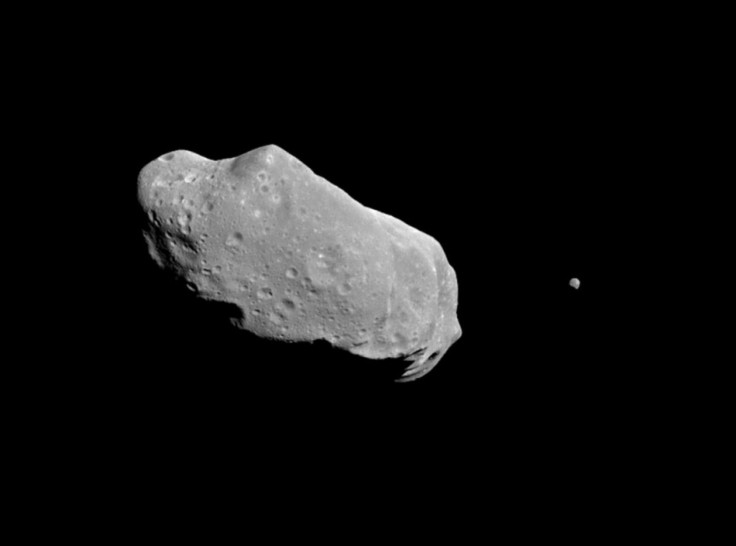Asteroid Mining Could Bring Metal Riches, Make Space Travel Cheaper

A startup backed by several billionaire investors outlined its plan Tuesday to mine asteroids for rare, expensive metals with unmanned spacecraft -- a project they hope to get off the ground within two years.
Planetary Resources Inc. plans to mine materials like water for hydrogen fuel and life-sustaining oxygen that could make future space travel easier along with mining platinum and palladium metals used in electronics, but scarce and expensive on Earth.
If you believe it's important to have continued prosperity for future generations, we need resources from somewhere, Eric Anderson, company co-founder, told ABC News. Asteroids are way, way more appealing than just about any other place we might look.
Key backers of Planetary Resources include Larry Page, co-founder and CEO of Google, Eric Schmidt, Google's executive chairman and Hollywood director and adventurer James Cameron.
Mining asteroids could make spaceflight exponentially cheaper, Anderson said. Planetary Resources could set up refueling stations for NASA to explore the outer reaches of the galaxy at a reduced cost. Refueling stations could also resupply satellites already in orbit and reduce the need to launch new ones, company officials said.
We're going to have to use the resources of space in order to explore space, Anderson told Bloomberg News. Instead of having to build a new telecommunications satellite we can refuel the ones already up there.
Asteroid mining is a potentially lucrative venture, John Lewis, a professor of planetary science at the University of Arizona's Lunar and Planetary Laboratory, wrote in his 1997 book Mining The Sky. A relatively small asteroid, a mile (1.6 kilometers) across, would contain over $20 trillion dollars' worth of precious metals, he wrote.
On a 50-year time scale the inclusion of space resources will add literally trillions of dollars to the global GDP, Anderson told Bloomberg News. We'll be the first company to do this, but no doubt there will be many others.
Mining a celestial object isn't a new concept -- Harrison Schmitt, Apollo astronaut, geologist and former Senator, recommended mining the moon for helium in February 2011. Helium has a variety of uses in MRI machines and nuclear reactors. NASA also uses helium to help pressurize space shuttles.
The United States has stockpiled helium since 1920, but current consumption rates could deplete the stockpile within 20 years, according to Discovery News. Lunar mining could boost the supply and bring down the cost of helium, but the project is currently prohibitively expensive. Schmitt estimates lunar mining would cost $15 billion over 15 years.
Asteroid or lunar mining is expected to be difficult, though extreme mining exists on Earth. The Mponeng gold mine in South Africa is the world's deepest mine and extends over 13,000 feet (4,000 meters) below the surface. A trip to the bottom of Mponeng takes over an hour. At such depths, the surrounding rock reaches 140 degrees Fahrenheit (60 degrees Celsius), so miners continuously pump ice into the tunnel to keep the mine around 85 degrees Fahrenheit (30 degrees Celsius).
Planetary Resources will first launch a telescope to identify asteroids that pass close to Earth and have the right mineral composition. Anderson said the launch will happen soon -- within two years. Once they find they right asteroid, the company will launch a prospecting robot to bring samples back, which could occur within five to 10 years.
Aerospace engineers Anderson and Peter Diamandis also cofounded the commercial spaceflight company Space Adventures in 1998.
Launching a telescope within two years may sound farfetched, but if anyone could pull it off they can, Michio Kaku, a physicist at the City College of New York, told ABC News.
I think they are part crazy and part genius, he said. But the bottom line is, they're rich.
© Copyright IBTimes 2025. All rights reserved.





















